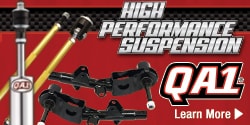TAK65
Well-Known Member
Hi all,
another issue my handyman reminded me of...he could not adjust the idle low enough with the breather valve connected to the carb (1963 225 with a super six). With the hose hanging loose and the carb port capped, no problems. The valve was new/NOS one. Same thing with my all original 1964 Valiant w a 170 and original carb. Also a brand new valve. Can anyone shed some light on what we are missing here?
Thanks in advance,
Tina
another issue my handyman reminded me of...he could not adjust the idle low enough with the breather valve connected to the carb (1963 225 with a super six). With the hose hanging loose and the carb port capped, no problems. The valve was new/NOS one. Same thing with my all original 1964 Valiant w a 170 and original carb. Also a brand new valve. Can anyone shed some light on what we are missing here?
Thanks in advance,
Tina
















